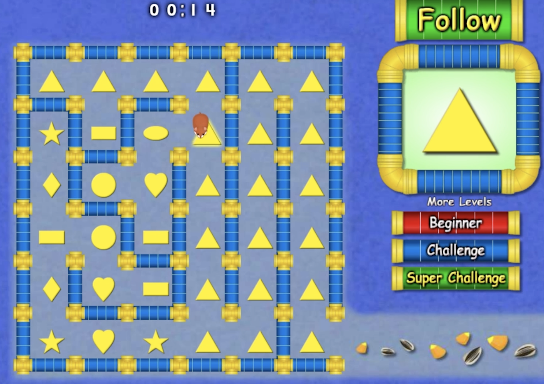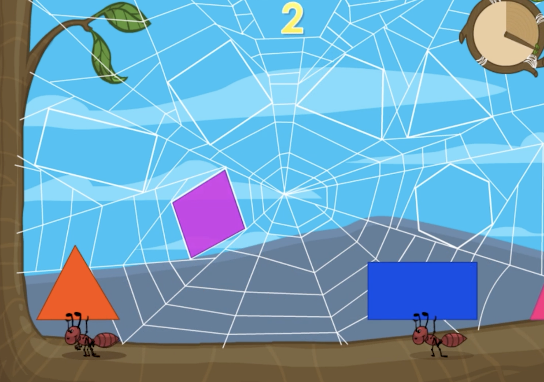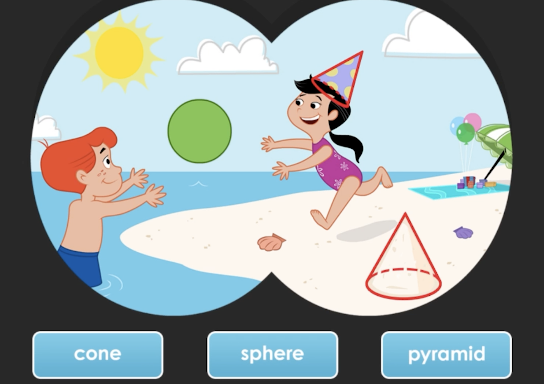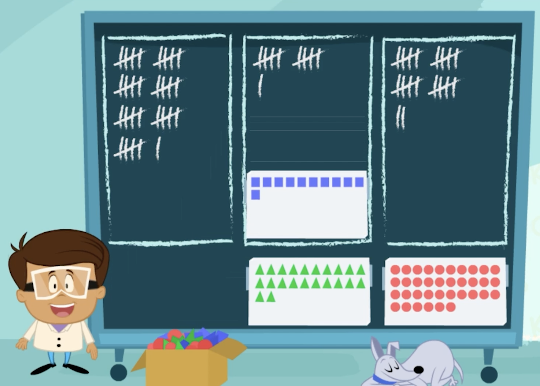How Online Games Can Enhance Foundational Math Concepts

Just as online educational games bring benefits to learning literacy skills, such as recognizing sight words and learning the alphabet, they also offer advantages to learning foundational math skills, such as shape recognition.
Research on the effectiveness of online educational games in improving basic math skills in children has shown promising results. Studies indicate that digital game-based learning can be an engaging and effective way to help teach math skills to children.
Digital Math Games in Action
To better understand how digital games can aid in teaching beginner math skills, let’s explore how these games can turn foundational math concepts, such as learning shapes, into engaging activities that capture children’s interest and facilitate deeper learning.
How Digital Games Make Math Appealing to Young Children
- Integrate the fundamental concepts of geometry with interactive, engaging activities.
- Tailor gameplay, including content and game visuals and audio, to the correct age group.
- Turn abstract concepts, like shapes, into vibrant and fun experiences.
Incorporating all three of these elements into an educational math game needs to be done seamlessly to create a quality and impactful learning experience.
Examples of How Digital Math Games Make an Impact
In the digital shape game Hamlet the Hungry Hamster, preschoolers and kindergarteners engage in helping Hamlet the Hamster navigate his way out of a maze by following various age-appropriate 2D shapes, such as triangles. As children correctly move the adorable hamster through the maze, they grow their familiarity with shapes and are rewarded by successfully completing the maze.

Another advantage of using educational games to teach concepts like shape recognition is their ability to present geometric figures in a dynamic and visually appealing way. Children can interact directly with shapes, manipulating them through dragging, rotating, and matching activities.
This hands-on interaction can help young learners understand the properties of different shapes, including how they look from various angles and how they fit together with other shapes.
For example, children are given an opportunity to drag shapes into matching outlines in the game Spider Web Shapes, where they assist a spider in completing its masterpiece while growing their understanding of various 2D shapes.

Explore More Digital Math Games
Here are two more online games that can help bolster children’s early math skills, specifically with shape recognition.
Shawna’s 3D Shape Hunt
In this game, children will join Shawna as she explores the sandy shores in search of different 3D shapes. As they enjoy time at the beach, children can work on spatial reasoning, shape recognition, and geometry.

Ivan’s Tally Time
In this game, children will help match the number of shapes in Ivan’s boxes to the number of tally marks on a blackboard, working on shape recognition, counting, one-to-one correspondence, and cardinality.

The integration of game-based learning into math education can offer a more dynamic and motivating learning experience for children, potentially leading to improved mathematical skills and greater enthusiasm for the subject.
Related Activities
-
Michigan Homeschooling Laws
Learn about Michigan homeschooling laws, including subject requirements, options for teaching at home, and key resources like support groups and sports opportunities. Understand how to start…
-
Eclectic Homeschooling
Eclectic homeschooling allows parents to customize their child’s education by blending elements from various teaching methods. Learn how this flexible approach can create a tailored learning…
-
Homeschooling with Unit Studies
Unit studies in homeschooling explore a single topic through multiple subjects like math, science, and history. This flexible, engaging approach helps deepen understanding and supports long-term…
-
Can I Homeschool and Work Full Time?
Balancing full-time work and homeschooling is challenging but possible with careful planning. Get tips on seeking help from family or hiring support, utilizing online curricula, and…
-
What is Tactile Learning
Tactile learning is a hands-on approach that engages students through physical activities and touch. Learn how to incorporate tactile learning into your homeschool with examples, tips,…
-
Kindergarten Homeschool Schedule
Create an effective kindergarten homeschool schedule with manageable lessons, regular breaks, and flexibility. Incorporate fun, hands-on activities, and tailor the routine to fit your family’s lifestyle.…







